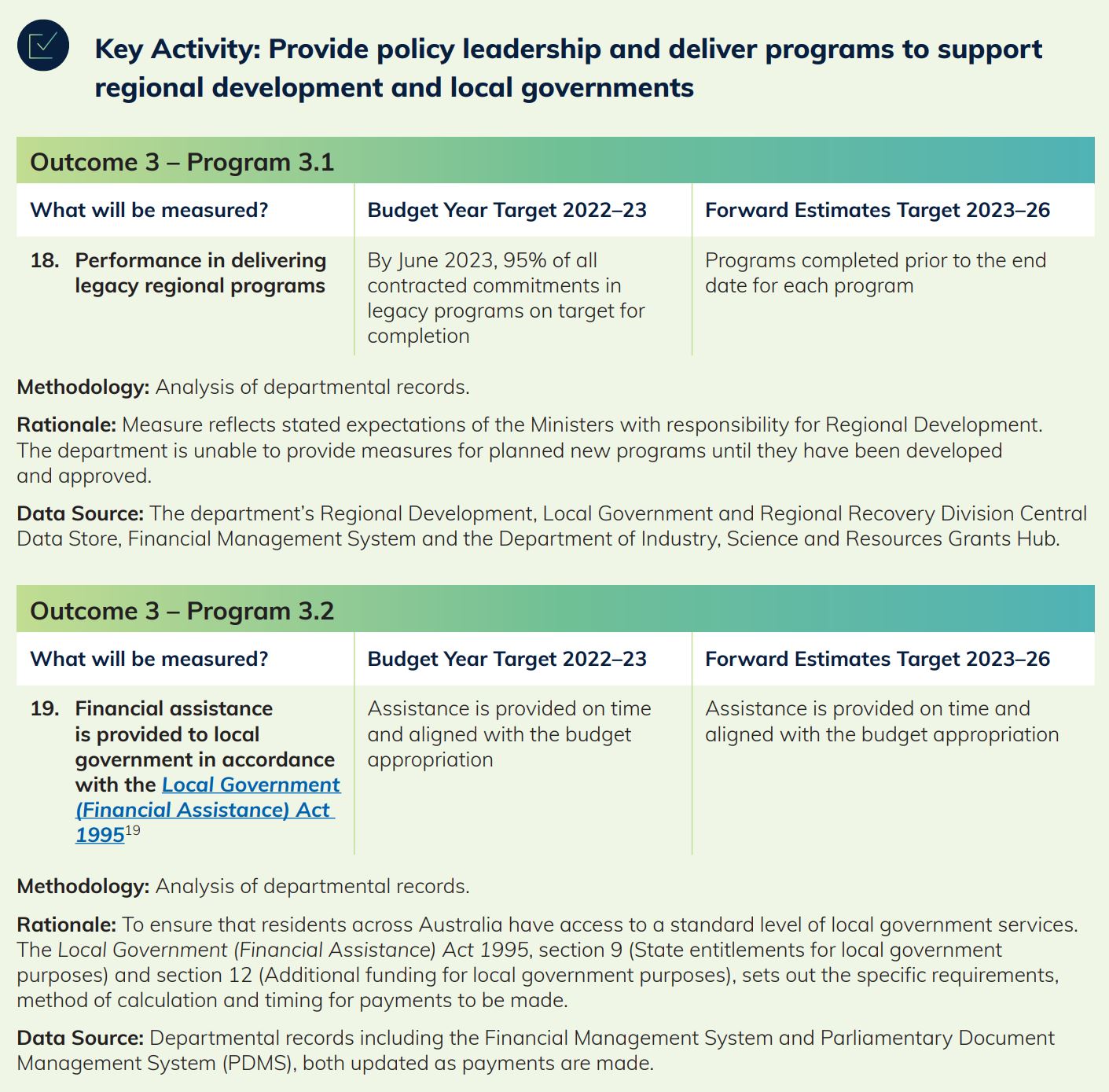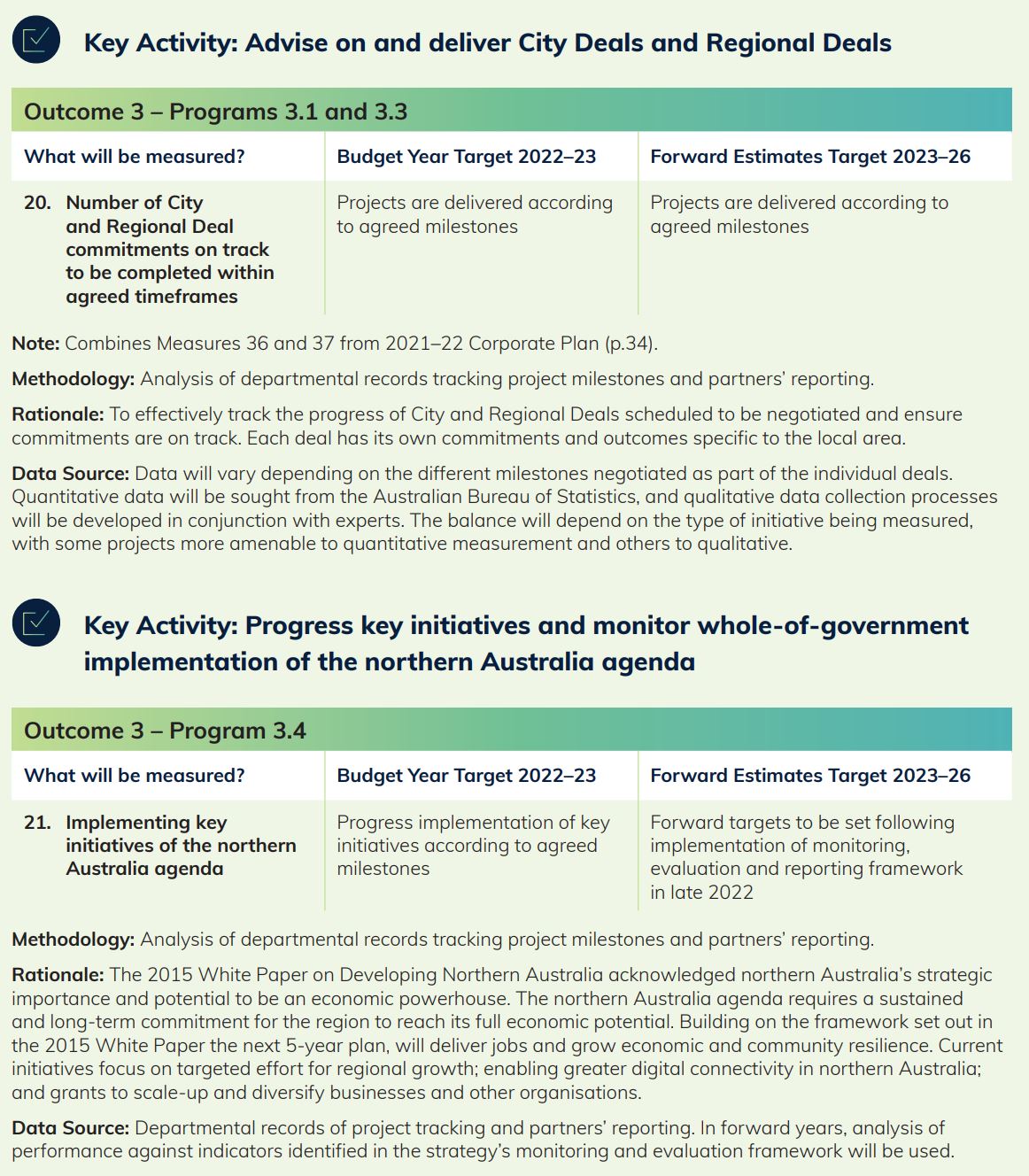PGPA Rule section 16EA(b)
The performance measures meet this requirement when they use sources of information and methodologies that are reliable and verifiable.
Performance measures must use sources of information (i.e. data sources) and methodologies that are reliable and verifiable. These terms are taken to have their common, everyday meaning:

Performance measures should be supported by clearly identified data sources and methodologies. Methodologies used need to be designed in a way to produce accurate data, be applied consistently (both by different users at a given point in time and by similar users over different reporting periods) and be able to be substantiated. This allows for the processes followed in generating data for each measure to be validated.
Entities should maintain records that properly document the data sources and methodologies used to measure performance. It is a better practice to report the data source and methodology chosen for each performance measure in entity corporate plans and annual performance statements.
Data sources might include research and evaluation centres (such as the Bureau of Infrastructure, Transport and Regional Economics), internal databases or systems (such as payment or call centre systems), or external sources (such as the Australian Bureau of Statistics or OECD reports).
Methodologies may include participant and stakeholder surveys, benchmarking, evaluation or data mining and analysis.
Entities should avoid using vague language like ‘qualitative assessment’ but rather identify a specific methodology (such as accessing results from internal databases, participant and stakeholder surveys conducted by an independent organisation, or calculations that rely on inputs from specified internal or external sources).
Entities should avoid using vague language such as ‘timely’ or ‘ready to implement’ when describing timeframes and intended results. Precise parameters should be available to a reader applying performance assessment. Without this information, there is a potential for bias in the reported result and it may be difficult for the performance measure to be measured consistently, or be substantiated.
For example, a measure such as ‘Government measures are legislated and implemented in a timely manner’ does not make clear what the measures are, what ‘timely’ means, nor what implemented means. Does the entity have a timetable for implementation? The language used should be clear to enable consistent measurement and enable the reader to understand what is being measured and how.
By contrast, the information presented in the example below allows the reader to understand what is being measured and how, and provides confidence that the data can be substantiated and verified.
Demonstrating that performance measures are reliable and verifiable
The Department of Infrastructure, Transport, Regional Development, Communications and the Arts 2022–23 Corporate Plan, includes a range of performance measures for each program. The table below provides details of performance measures, targets over the life of the corporate plan, the methodology, rationale and data sources for performance measures under Program 3.
For more information on corporate plans please visit the Transparency Portal or the relevant entity’s website.



